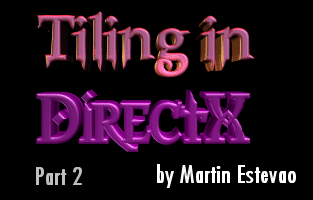11/10 - 11/12 @ Montréal, Canada
12/5 - 12/7 @ Shanghai, China
12/24 - 12/27
2/28 - 3/4 @ San Francisco, CA
More events...
2406 articles in the reference section.
Help us fight cancer!
Join SETI Team GDNet!

|
Final Thoughts
This article is © 2000 Martin Estevao. This article may not be re-printed without the author's consent.
|
||||||||||||||||||||